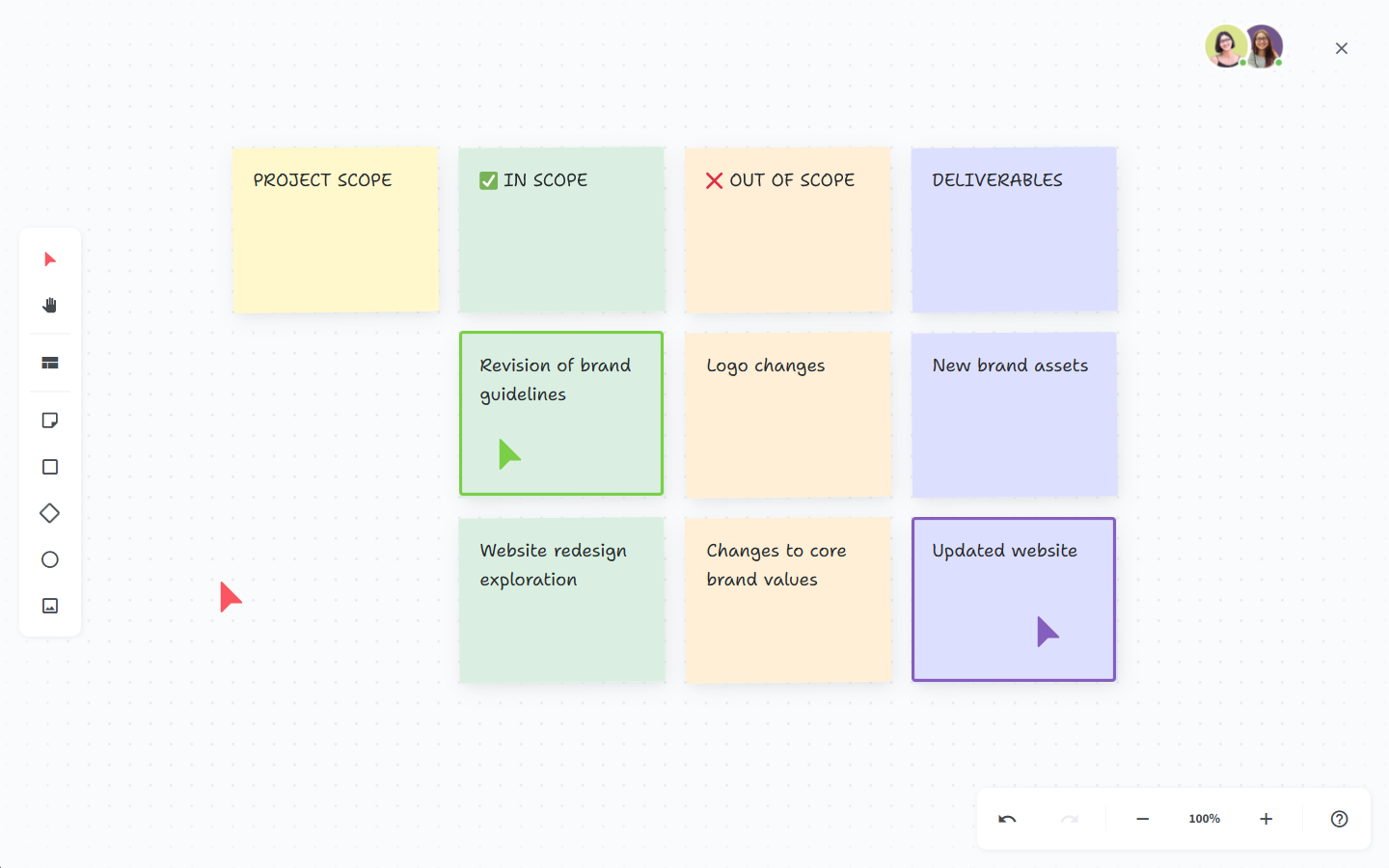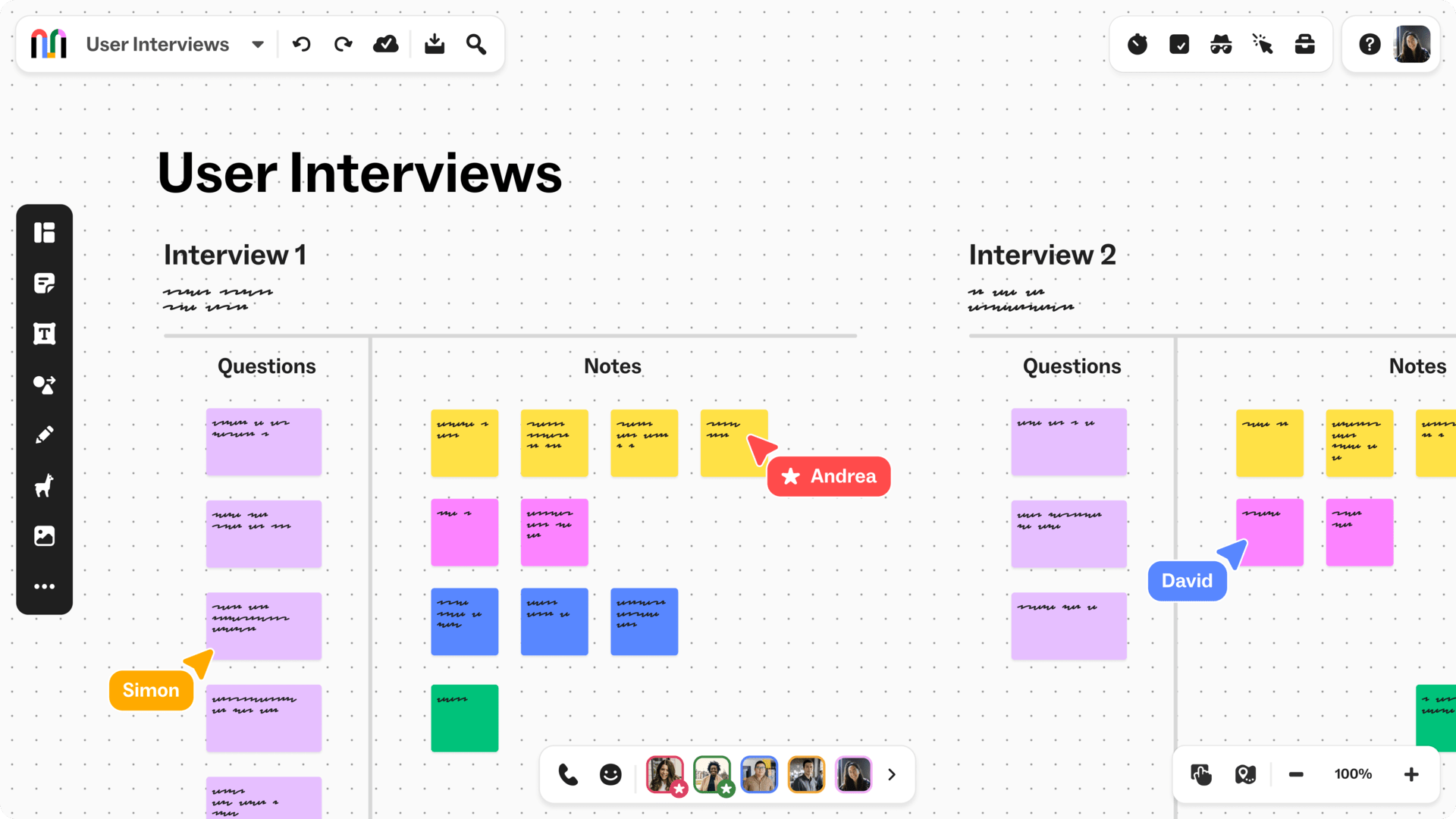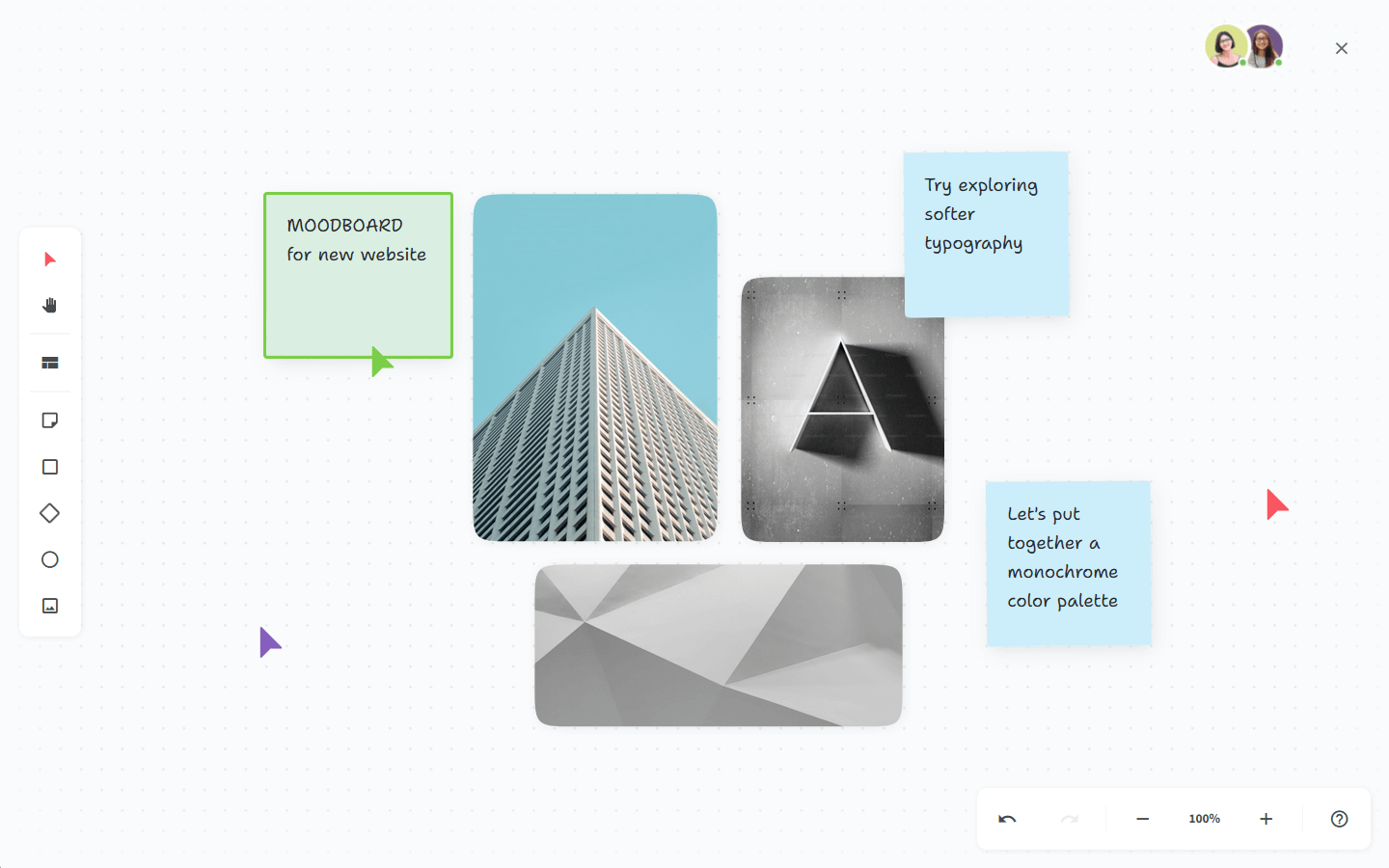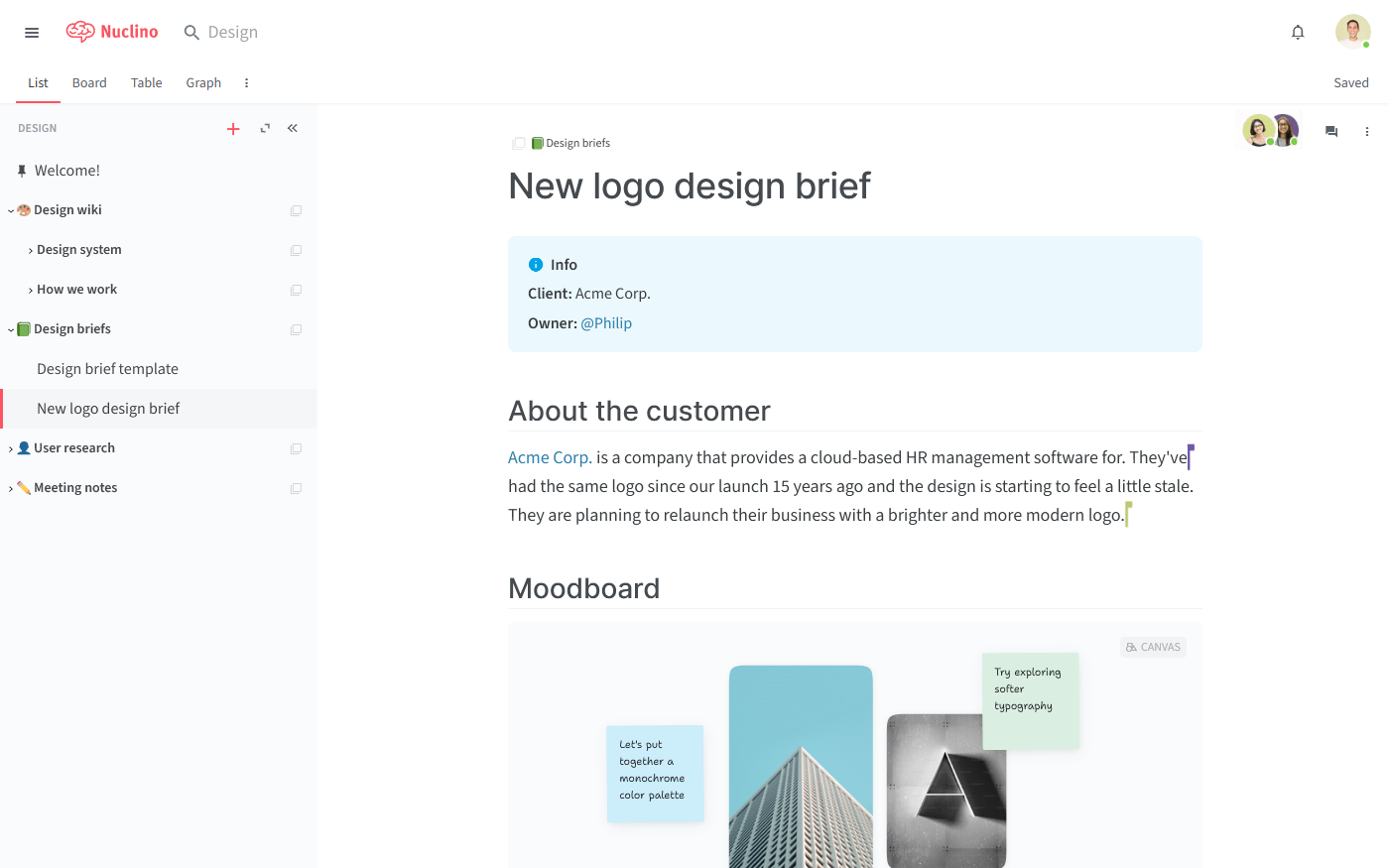Miro vs Mural
Learn more about your options and pick the best tool for your team.
Unsure whether to choose Miro or Mural? You've come to the right place.
Mural and Miro are among the most popular visual collaboration tools in the market today. Released in 2011, both tools are designed to help teams brainstorm, plan, and collaborate in real time.
In this article, we will take a closer look at both Miro and Mural and examine their strengths and weaknesses to help you make the right decision for your company.
Miro and Mural compared
The main difference between Miro and Mural is their focus and user experience.
While both offer similar core functionalities, Miro tends to provide a broader range of integrations and customization options, making it a versatile tool for various workflows. Mural, on the other hand, emphasizes ease of use and simplicity, making it ideal for teams looking for straightforward collaboration.
Ultimately, it will all come down to your unique needs, preferences, and workflow, as there is no one-size-fits-all solution when it comes to productivity software. And if you're having trouble choosing between Miro and Mural, keep in mind that they aren't your only options. There are many other excellent tools that may turn out to be an even better fit for your needs.

To make the most informed decision, let's first dive deeper into what Mural and Miro have to offer, taking into account their strengths, limitations, notable features, pricing, and user reviews. We will also have a look at other alternatives you may want to consider.
Miro

Pricing: Free, advanced features starting from $8/user/month
Rating on Capterra: 4.7/5
Miro, initially known as RealtimeBoard, is a comprehensive digital whiteboard platform. While Mural focuses on simplicity and ease of use, Miro offers more depth in terms of features and flexibility.
Miro includes a variety of advanced widgets and tools, such as mind maps, Kanban boards, and Gantt charts, providing more robust options for project management. Miro also offers more sophisticated tools for creating detailed diagrams and process maps, which can be more complex and versatile compared to what you can do in Mural.
Why you might prefer Miro over Mural:
Miro offers more advanced diagramming and visualization features.
Miro is designed to grow with your needs and can support larger teams.
Miro users can personalize their workspaces with custom templates, widgets, and API integrations.
Miro supports advanced collaboration features like video conferencing, screen sharing, and live chat within the platform.
What users say about Miro:
"I chose Miro over other options that I've evaluated (Mural, and FigJam) because it's much more fully-featured than those competitors (plus it's more visually appealing.) My past company made heavy use of the newer interactive features (timer, voting) which are highly valuable when facilitating workshops. I primarily use Miro for workshop facilitation, but I also use it as a low-budget way to analyze research findings because it enables me to move sticky notes around and create themes, which I can use to report back my high-level findings."
Looking for more tools similar to Miro? Check out this list of Miro alternatives.
Mural

Pricing: Free, advanced features starting from $9.99/user/month
Rating on Capterra: 4.5/5
Mural emphasizes simplicity and ease of use, providing a more streamlined experience compared to Miro. Mural's interface is designed to be intuitive, reducing the learning curve for new users. This makes it a potentially better choice for teams that need to get started quickly without extensive training.
Mural offers essential collaboration features such as sticky notes and drawing tools. It also stands out for its powerful features designed to help you run workshops and brainstorming sessions, such as private mode, voting sessions, and a timer.
Why you might prefer Mural over Miro:
Mural's intuitive design makes it easier for new users to get started without a steep learning curve.
Mural focuses on essential collaboration features, avoiding the complexity of more advanced tools.
Mural allows teams to start collaborating immediately without extensive setup.
What users say about Mural:
"Miro was getting really buggy and difficult to use. A lot of the commands changed and it wasn't as intuitive as when I first started using it. I find Mural more intuitive to use and less buggy than other whiteboarding tools. The app especially syncs quickly so you can use an iPad and pencil to write on the whiteboard, and have it projected through a desktop to a conference room or virtual meeting."
Other alternatives
It should be mentioned that your options are not limited to just Mural and Miro. There are many other great visual collaboration tools and online whiteboards that can serve you just as well. For example, if you like the idea of a more lightweight, intuitive, and seamless solution, consider Nuclino.

Nuclino is more than just a virtual whiteboard or a diagramming tool — it's a unified workspace for all your team's knowledge, documents, and projects. Unlike Miro and Mural, which primarily focus on whiteboarding and diagramming, Nuclino seamlessly integrates these features into a single collaboration tool. It can replace not only Miro and Mural but also platforms like Trello, Confluence, and more.

Like Miro and Mural, Nuclino supports real-time collaboration on an infinite online whiteboard, allowing you to create diagrams and flowcharts, brainstorm ideas with sticky notes, and build moodboards.
These whiteboards can be added to any document in Nuclino. For example, you can embed a brainstorming whiteboard into a project plan document, where team members can contribute ideas and strategies. Or you can add a moodboard to a marketing campaign proposal to gather visual inspiration, notes, tasks, and goals in one place.

You can organize these documents in a variety of ways, including a nested list, a Kanban board, a table, or an interconnected graph. This allows you to tailor the workspace to your team's workflow, whether it's managing projects, brainstorming, taking meeting notes, or building an internal knowledge base.

Miro vs Mural: So which is better?
There is no objectively "best" choice when you compare Miro and Mural. Both solutions are popular for different reasons, and depending on your unique requirements and preferences, one of them might be a much better fit than the other.
Miro is a versatile tool with extensive integrations and customization options. This may make it a better fit for complex workflows and diverse team needs. Mural, on the other hand, offers a more straightforward and user-friendly experience, and teams that value ease of use and quick setup may prefer it.
On the other hand, if you like the idea of replacing multiple tools with a single solution for all your docs, projects, diagrams, and whiteboards, consider exploring other alternatives, such as Nuclino.
We hope this article has made your decision a little easier.
Ready to get started?
